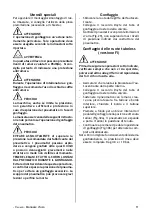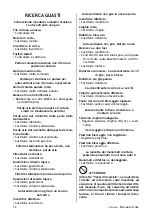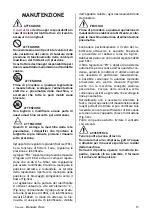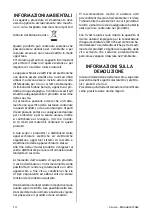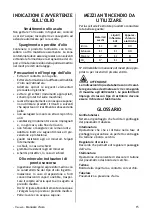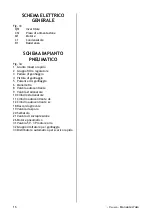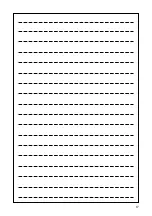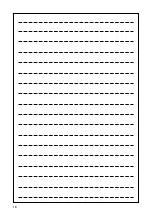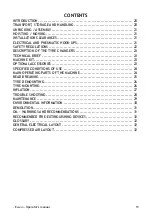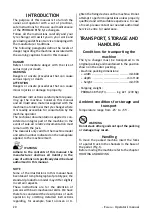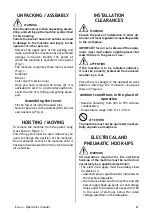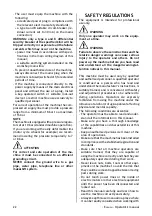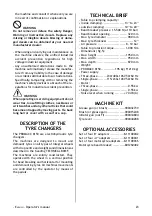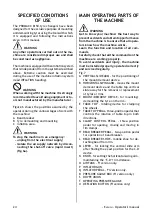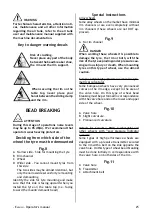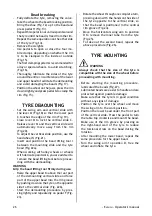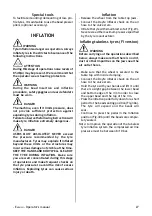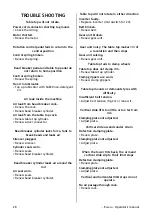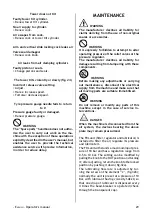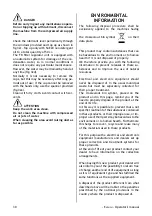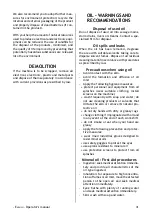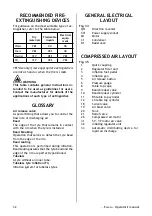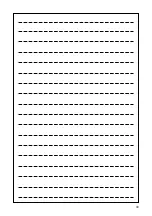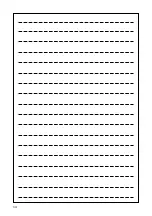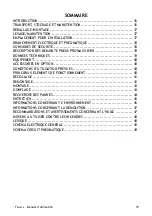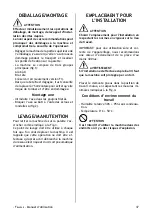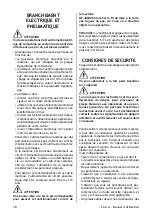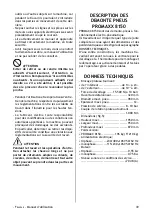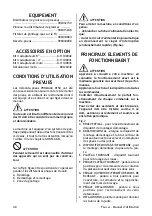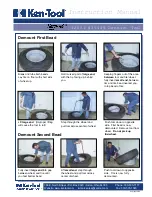
- E
nglIsh
-
Operator’s manual
25
WarNiNG
For technical characteristics, attention noti-
ces, maintenance and all other information
regarding the air tank, refer to the air tank
user and maintenance manual supplied with
the machine documentation.
Key to danger warning decals
risk of crushing.
Never place any part of the body
between the bead breaker shoe,
the rim and the rim support.
When securing the rim on the
table top, never place your
hands between the sliding clamp
and the rim.
BEaD BrEaKiNG
aTTENTioN
During this stage of operations noise levels
may be up to 85 dB(a). We recommend that
operators wear hearing protectors.
Deciding from which side of the
wheel the tyre must be demounted
Fig.8
A Narrow side - Side for mounting the tyre
B Rim channel
C Wheel
D Wider side - You cannot mount tyres from
this side
The two sides may be almost identical, but
only the narrow side serves for tyre mounting
and demounting
Identify the side for tyre mounting and make
sure that this side is facing upward when you
install the tyre on the table top (i.e. facing
toward the mount/demount head)
Special instructions
Alloy wheels
Some alloy wheels on the market have minimal
rim channels or are even completely without
rim channels (these wheels are not DOT ap
-
proved).
Fig.9
A No rim channel
DaNGEr
When working these wheels it is possible to
damage the tyre, the rim or both, with the
risk of the tyre exploding under pressure cau-
sing serious injury or death. When mounting
tyres on this type of wheel, use the utmost
caution.
European style high performance wheels (asym
-
metrical curvature)
Some European wheels have very pronounced
curves on the rim edge, except in the area of
the valve hole. On this type of wheel bead
breaking must be performed in correspondence
with the valve hole and on the lower and upper
side of the wheel.
Fig.10
A Valve hole
B Slight curvature
C Pronounced curvature
Wheels for Corvette, BMW, Lamborghini and
other wheels with “Low pressure indicator
system”
Some types of high performance wheels are
equipped with a pressure transmitter secured
to the rim with a belt on the side opposite the
valve hole. On this type of wheel bead breaking
must be done initially in correspondence with
the valve hole, on both sides of the rim.
Fig.11
A Valve hole
B Transmitter
C Attachment belt
Summary of Contents for PROMAXX 8150
Page 17: ...17...
Page 18: ...18...
Page 33: ...33...
Page 34: ...34...
Page 50: ...50...
Page 65: ...65...
Page 66: ...66...
Page 81: ...81...
Page 82: ...82...
Page 83: ...83 2 1 C A...
Page 84: ...84 4 3...
Page 85: ...85 5 6a 6 A B C mm A B E 8150 FI 8150 min 1570 750 870 max 1950 950...
Page 86: ...86 A N F G H M C O E B Q L S R T U P V 7...
Page 87: ...87 A B C D A A B C 10 8 9...
Page 88: ...88 13 11 12 A B C L H...
Page 89: ...89 16 14 15 G...
Page 90: ...90 19 17 18 M C 20...
Page 91: ...91 21 22a 22b N I...
Page 92: ...92 25 23 24 F D...
Page 93: ...93 28 26 27...
Page 94: ...94 29 30 a b...
Page 95: ...95 31...
Page 96: ...96 32...
Page 97: ...97 33 446694_2 3 ph...
Page 98: ...98 33 430710C2 1 ph...
Page 99: ...99 35 446726_2...
Page 100: ...100 35 446724_1 AIR MOTOR...
Page 101: ...101 35 453413 FI...
Page 102: ...102 35 453414 FI AIR MOTOR...
Page 103: ...103...
Page 107: ......

